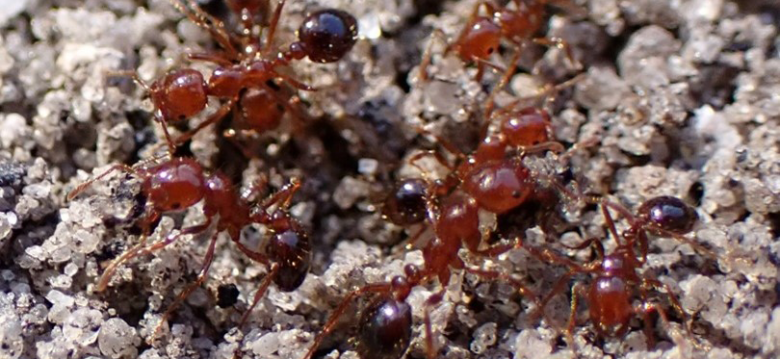Department of Environment and Natural Resources Confirms Presence of Fire Ants in Bermuda

The Department of Environment and Natural Resources (DENR) has confirmed the presence of red imported fire ants (Solenopsis invicta) in Bermuda following a recent discovery in Hamilton Parish.
The finding was made by local plant pathologist Sam Fraser-Smith of PlantLab Ltd., who contacted DENR after a family member was stung by an unusual ant while standing on a residential lawn.
Recognising the potential significance of the discovery, Mr Fraser-Smith collected several specimens and promptly delivered them to DENR for identification.
Specialists from the Food and Environment Research Agency (FERA) and Buglife (UK) subsequently confirmed the specimens as red imported fire ants. Additional molecular work planned for the coming week will further verify the identification of Solenopsis invicta.
Three ant mounds were located and treated immediately to eradicate the colonies. Fire ants are among the most destructive invasive species in the world, known to cause significant ecological and agricultural damage, disrupt electrical and communication infrastructure, and pose risks to human health.
Their stings produce painful burning sensations, followed by small white blisters that can persist for several days. Fire ants live in large colonies built around a single queen, with worker populations reaching several hundred thousand. The colonies form extensive underground nests that may be visible as external mounds.
These mounds grow as the colony expands and can develop rapidly, particularly after rainfall. Mated females are capable of flying several miles to establish new colonies, making early detection and response critical.
Given Bermuda’s small size and the ants’ ability to spread quickly, DENR is coordinating with other Government departments to contain the infestation and determine the extent of the problem. The public is encouraged to remain vigilant and to report any suspected fire ant sightings.
Fire ants are similar in size to the Argentine ant and are distinguished by their reddish colour. Their mounds are made up of fine, light grey granular material and can form within one to two weeks.
Members of the public are advised not to disturb or handle suspected fire ant mounds. Instead, photographs should be taken from a safe distance and sent via email to fireants@gov.bm.
Reports should include a brief description of the location or GPS coordinates so that DENR staff can investigate.
DENR also reminds residents of the importance of maintaining good sanitation around homes and workplaces. Keeping areas clean and free of debris can reduce food sources and discourage the establishment of colonies.
Regular cleaning and bleaching of surfaces can also help remove pheromone trails used by fire ants to navigate.
Minister of Public Works and Environment, the Hon. Jache Adams, JP, MP, said:
“The discovery of fire ants in Bermuda is a matter of serious concern, but it also highlights the value of public awareness and swift action.
“I commend Mr Fraser-Smith for recognising the significance of his find and reporting it promptly. With community vigilance and coordinated Government response, we can limit the spread of this invasive species and protect our environment, agriculture, and public health.”